Permissions and User Management
Invite people to your organization or a specific project directly and grant the appropriate access.
Tilladelser
With the help of roles, you can define whether users should have access only to the Editor or project settings (e.g., integrations, content management, etc.) or organization settings (e.g., authentication, billing, etc.).
Below you can see the roles and permissions users can have in Crowdin Enterprise:
- Owner – a person who created an organization and has complete control over it. The owner can invite users to the organization and manage their access, manage vendors, create projects and groups, upload source and translation files to the projects, set up integrations, edit organization settings, etc.
- Admin – has similar rights as an organization owner except the ability to delete an organization.
- Manager – depending on the Permission granularity settings, managers can be assigned on the organization, group and subgroup, and project levels. They inherit manager access to all the child entities of the parent entity (i.e., organization, group and subgroup). This user type can’t manage vendors, invite or manage users on the organization level, or edit organization settings.
- Organization Manager – can create and manage projects within the whole organization (including inviting people to projects and managing resources) and can access all the groups and subgroups.
- Group Manager – can create and manage projects within the group (including inviting people to projects and managing resources) and inherit manager access to all the subgroups of the managed group.
- Project Manager – can manage only the project they are invited to.
- Language Coordinator – can manage certain features of a project only within languages they have access to. Language coordinators can translate and approve strings, manage project members and teams, generate project reports, create tasks, and pre-translate the project content. Unlike managers, they do not have access to other project settings (e.g., project files, integrations, etc.).
- Developer – сan upload files, edit translatable text, connect integrations, and use the API. Cannot manage project tasks, members and reports.
- Contributor (i.e., Translator and Proofreader) – allows users to view projects, tasks, and workflow steps to which they are assigned, access the Editor on corresponding workflow steps, generate personal translation reports, and communicate with other project members.
- Proofreader – can translate and approve strings. Doesn’t have access to project settings.
- Translator – can translate strings and vote for translations added by other members. Doesn’t have access to project settings.
- Vendors – separate organizations providing professional translation services. After you invite a vendor to your project, the vendor organization receives a copy of the assigned workflow step in the Incoming Projects tab of their organization.
Inviting People to the Organization
When adding people to your organization, you can choose whether to grant them admin or workspace manager permissions or add them with no access to the workspace and configure their permissions later. An exception is crowdsourcing projects, which are visible to all organization members. Once you invite people to the organization, you can then invite them to specific projects or assign them to workflow steps.
To invite users to your organization, follow these steps:
- Open your organization’s Workspace and select Users on the left sidebar.
- In the Users tab, click Invite users in the lower-right corner.
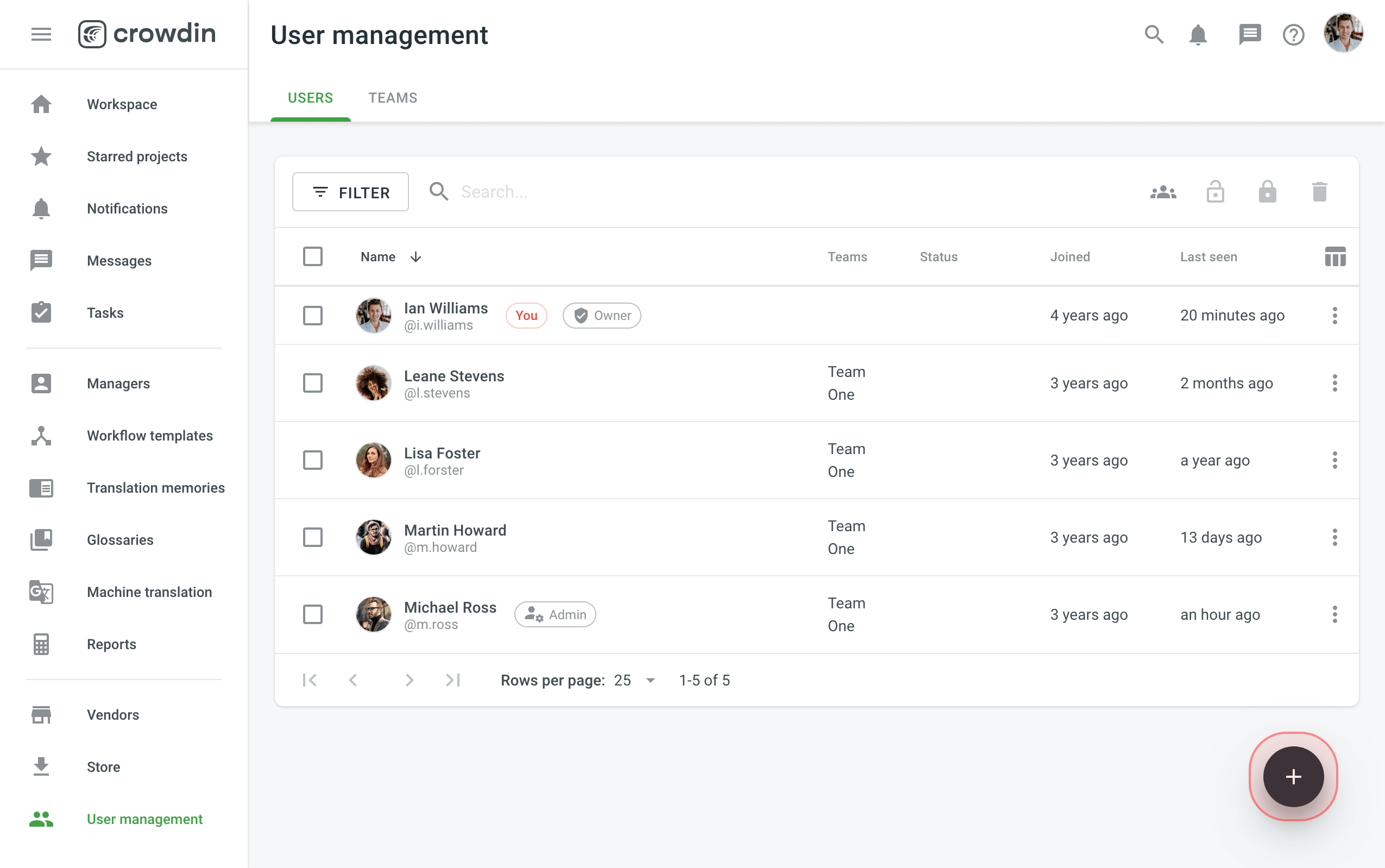
- Specify the email addresses of the people you want to invite and click Send invite.
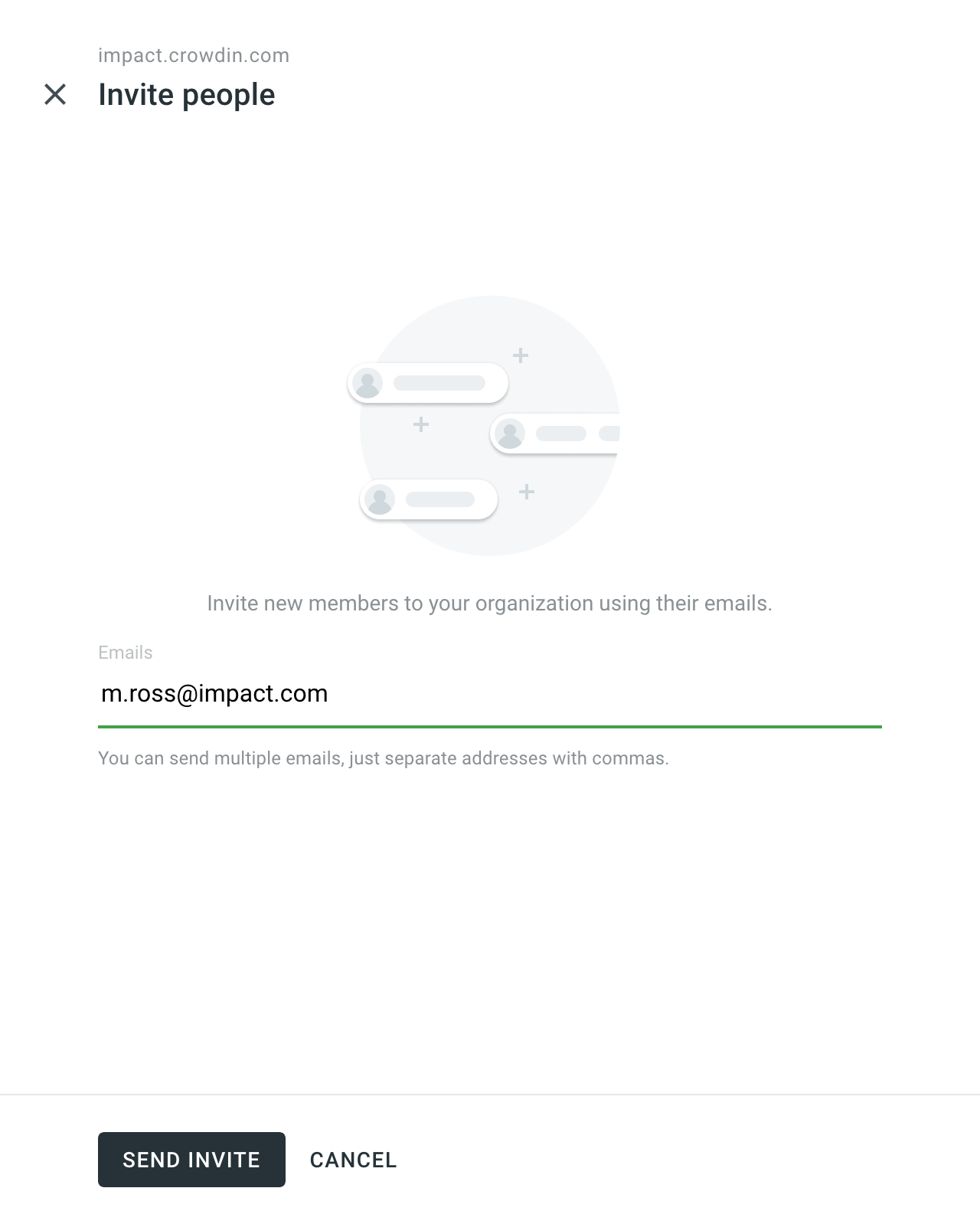
Once a user joins your organization, you can manage their permissions, track their contributions, update profile information, monitor their last activity, grant admin and workspace manager access, or block the user if necessary.
Managing Organization Users
Managing organization users in Crowdin Enterprise involves various operations such as managing permissions, adding to teams, contacting users, and deleting users. Below you can find instructions for each operation.
Viewing and Searching Users
Once you open the Users page, you can view and search for users in the Users tab.
You can view the list of organization users (one user per row) with the following details:
- Navn
- Teams
- Status
- Joined
- Last seen
By default, all users are displayed in the Users tab. To filter users displayed, click ![]() and use the available filter options:
and use the available filter options:
- Organization role: All, Admin, Manager, Vendor, Client.
- Status: All, Active, Pending, Blocked.
- Team: All, particular team.
- Projects: All, particular project.
- Project role: All, Manager, Developer, Translator, Proofreader, Language Coordinator, Member.
- Languages: All, particular language.
- Last seen: Any date, custom range.
- 2FA: All, Two-factor authentication enabled, Two-factor authentication disabled.
To search for a particular user, type their first name, last name, or username in the Search field.
To change the sorting order, click once or twice on one of the following column headings:
- Navn
- Status
- Joined
- Last seen
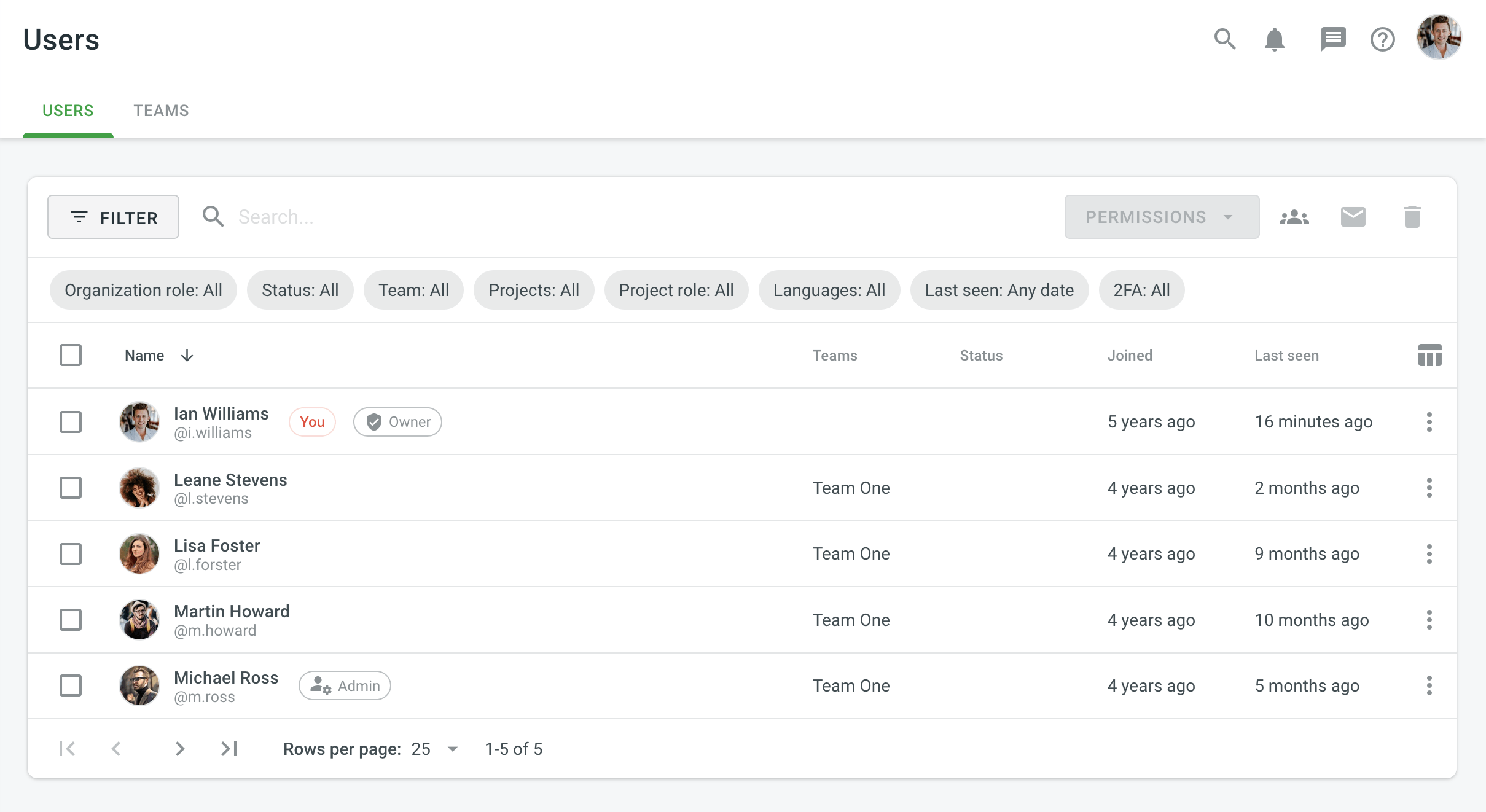
Viewing User Profile
To view and manage user profiles, follow these steps:
- Open your organization’s Workspace and select Users on the left sidebar.
- Double-click on the user or right-click and select Profile from the menu.
- In the user profile, you can perform various actions:
- Projects and Roles: Add, edit, clear, or delete project permissions.
- Groups: (only for Permission granularity mode) view and manage the groups which are managed by a user.
- Contribution: View and delete the user’s contributions across the organization.
- Profile: View and edit the user’s name, surname, pronouns, and time zone.
- Use the left panel to contact the user, view basic information, permissions, team memberships, joining date, last activity, pronouns, and local time.
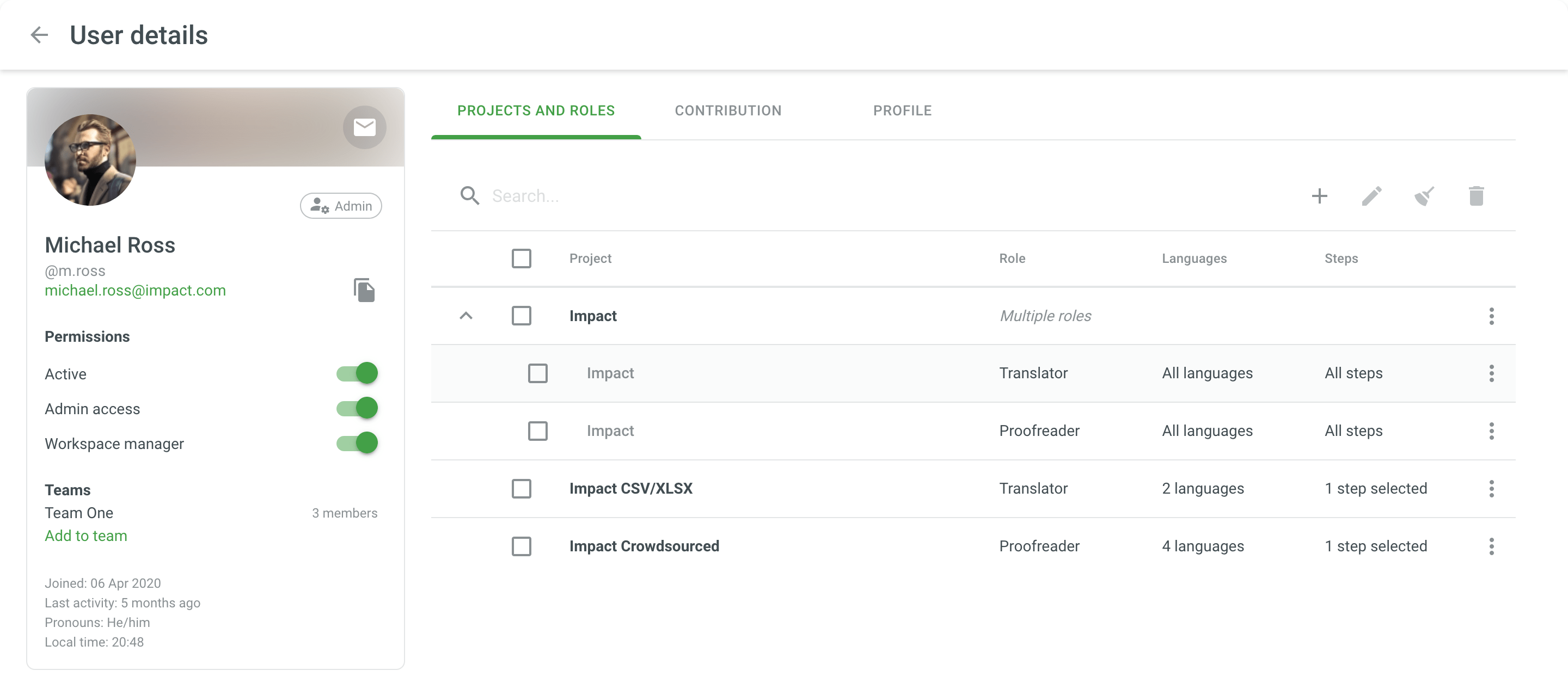
Changing Permissions
To change user permissions, follow these steps:
- Open your organization’s Workspace and select Users on the left sidebar.
- Select one or multiple users for which you want to change the permissions.
- Click Permissions in the upper-right corner or right-click on the user and change Permissions from the menu.
- Modify the permissions as needed:
- Add or remove project permissions.
- Enable or disable admin access.
- Block or unblock the user.
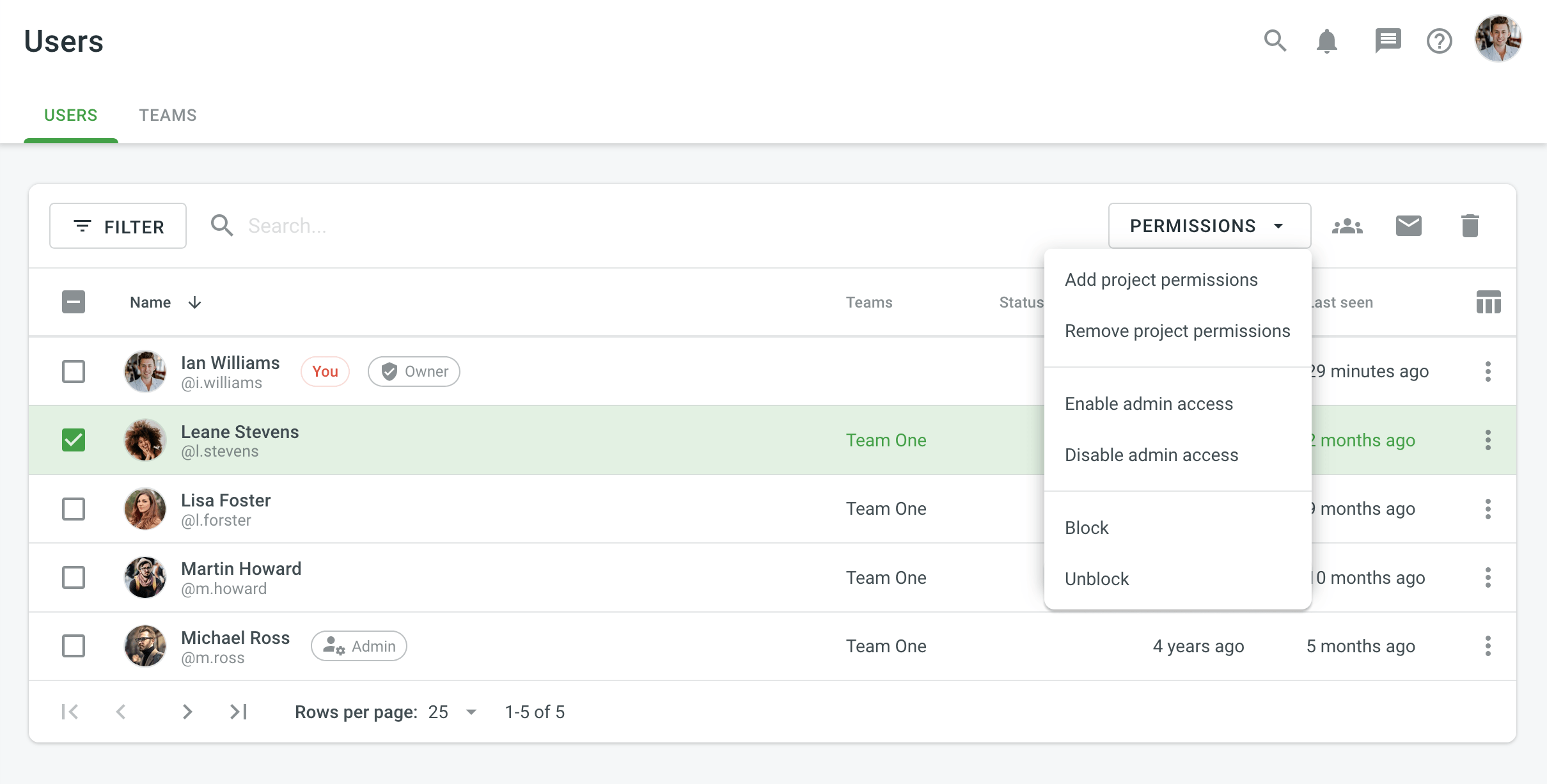
Adding to Team
To add users to a team, follow these steps:
- Open your organization’s Workspace and select Users on the left sidebar.
- Select one or multiple users that you want to add to a team.
- Click Add to team or right-click on the selected users and select Add to team from the menu.
- Select the team to which you want to add the users.
Contacting Users
To contact users, follow these steps:
- Open your organization’s Workspace and select Users on the left sidebar.
- Select one or multiple users that you want to contact.
- Click Contact or right-click on the selected users and select Contact from the menu.
- Compose your message and send it.
Deleting Users
To delete users from the organization, follow these steps:
- Open your organization’s Workspace and select Users on the left sidebar.
- Select one or multiple users that you want to delete.
- Click Delete or right-click on the selected users and select Delete from the menu.
- Confirm the deletion.

Invitation af personer til projekt
You can add members within the project and define their access permissions at every workflow step.
To invite members to a specific project, follow these steps:
- Åbn projektet og gå til fanen Medlemmer.
- Click Invite People in the upper-right corner.
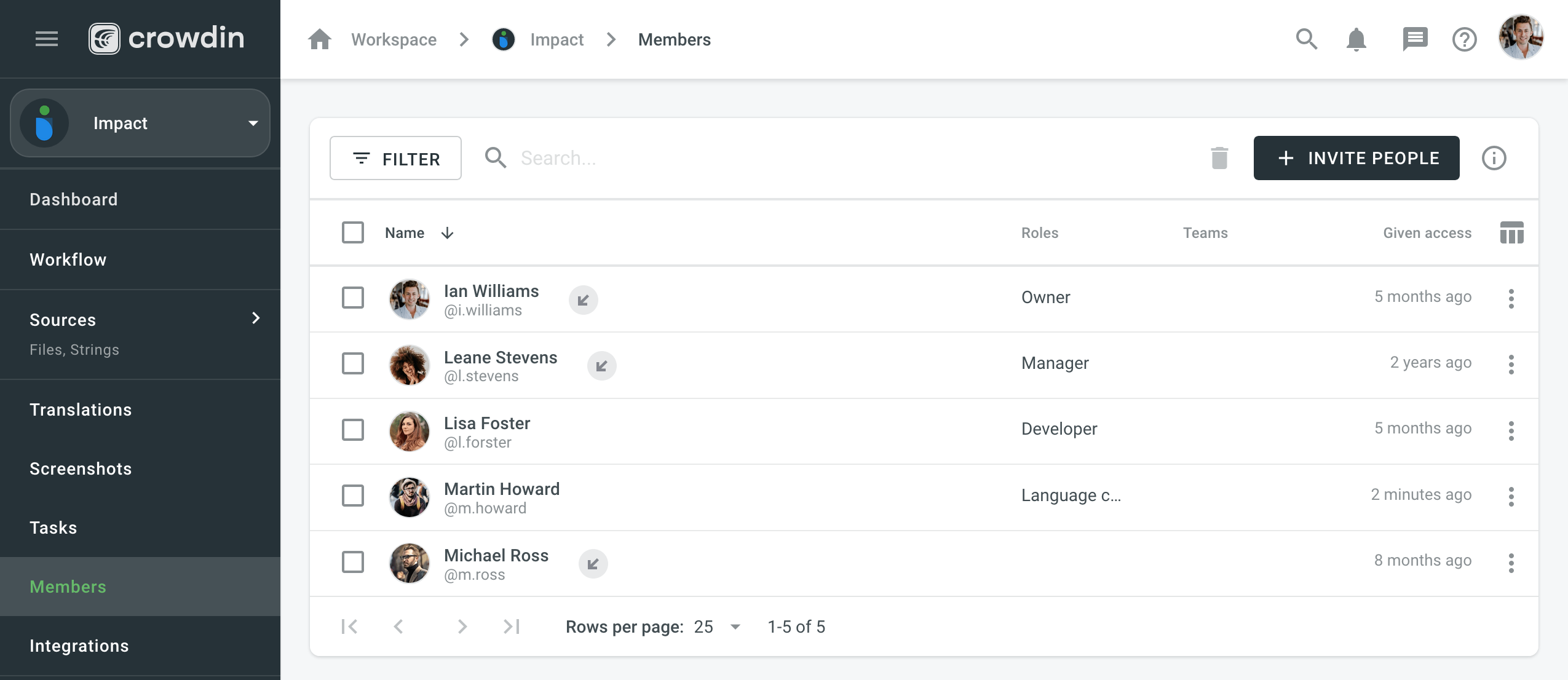
- Select from current organization members or type the email address of the person you need to invite. You can also copy the shareable link and send it via email directly.
- Define the permissions for an invitee. By default, Access to all project languages is enabled. Disable it if you want to grant access to specific languages or workflow steps.
- Сlick Invite.
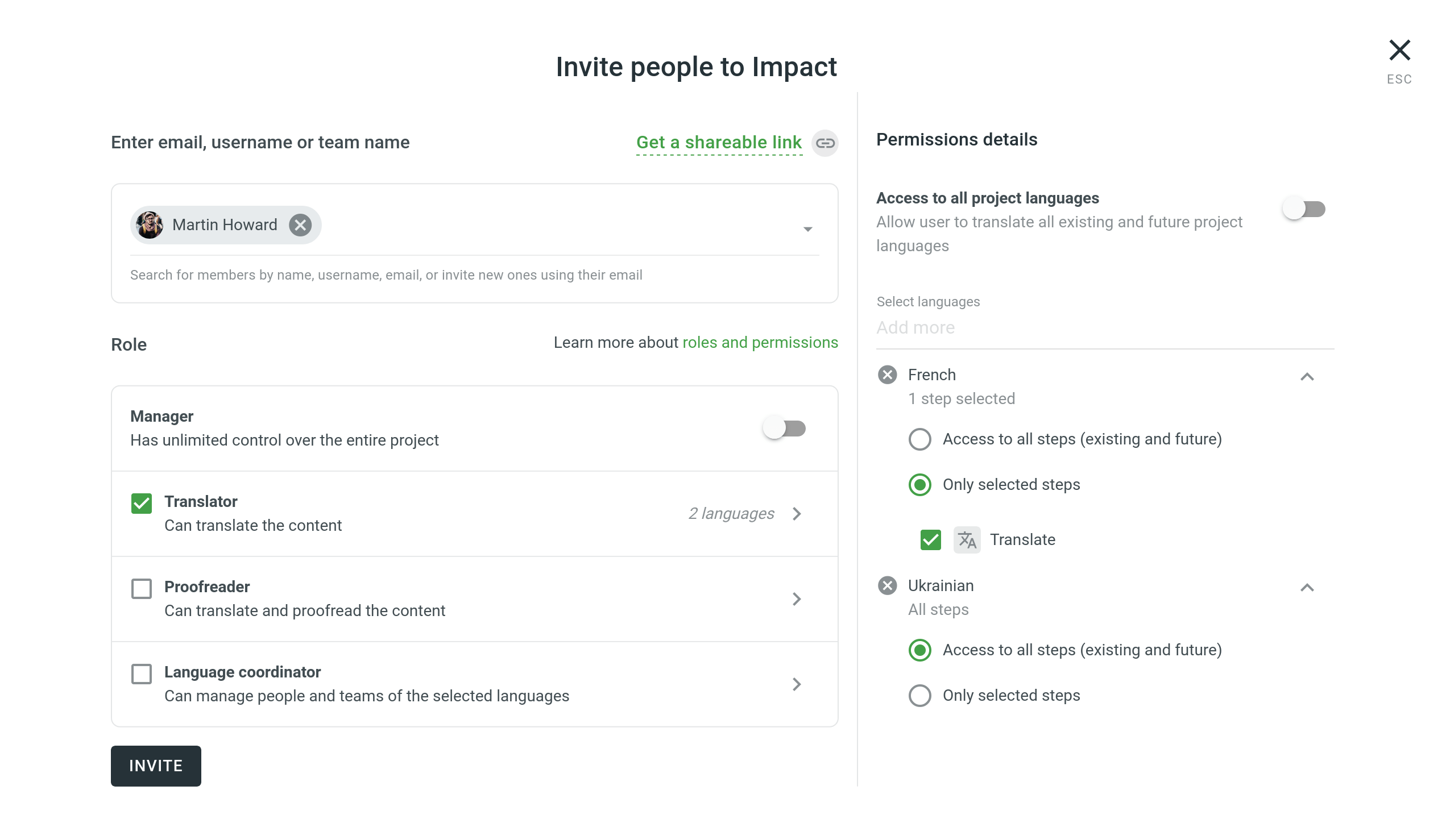
Changing Project Member Permissions
Once a user joins a project, you can add or remove their permissions within a project (e.g., change roles, access to languages, and workflow steps), similarly to the invitation process.
To change project member permissions, follow these steps:
- Åbn projektet og gå til fanen Medlemmer.
- Select one or multiple users for which you want to change the permissions.
- Click Permissions in the upper-right corner.
- Select either Add project permissions or Remove project permissions.
- In the appeared dialog, configure the permissions you want to add or remove and confirm the changes.
Teams
Once you invite people to your organization, you can create teams to simplify people management while assigning members to the projects, workflow steps and tasks.
Read more about Teams.